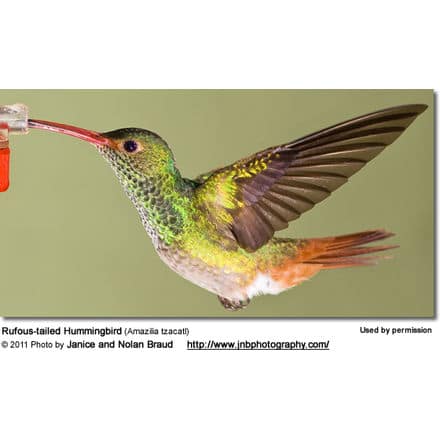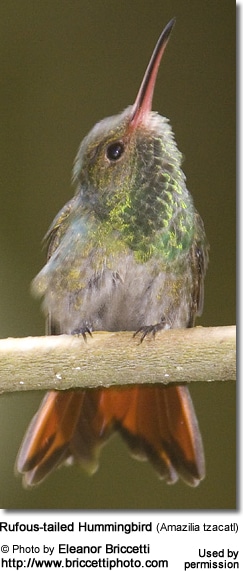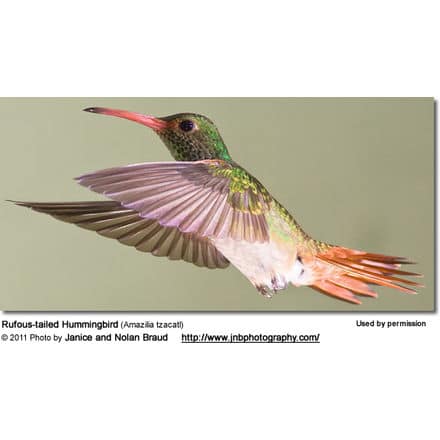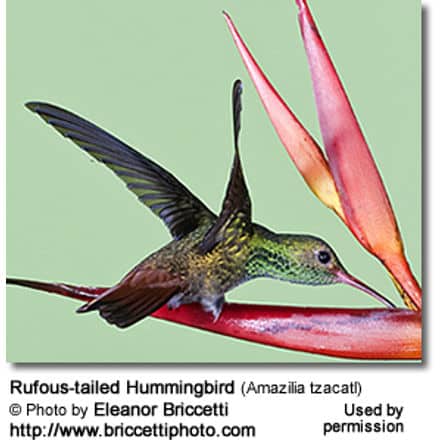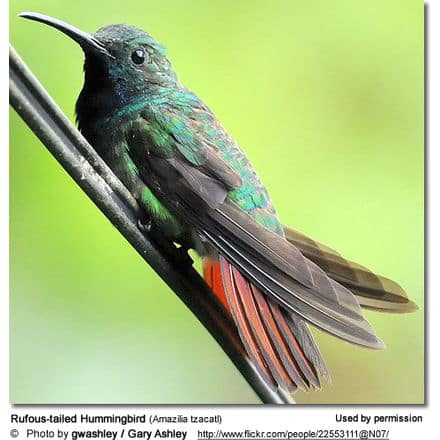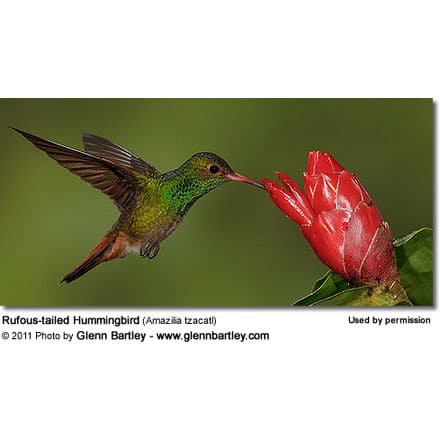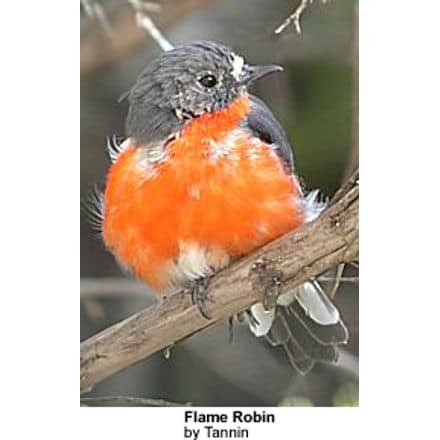Rufous-tailed Hummingbirds
Hummingbird Information
The Rufous-tailed Hummingbirds (Amazilia tzacatl) – also known as Rieffer’s Hummingbird – is a common Central and South American hummingbird that can be found in the open country, along river banks and the forest edge, in woodland and scrub, as well as plantations and gardens up to 1850 m (6000 ft).
Formerly considered a separate species, the larger Escudo Hummingbird from Isla Escudo de Veraguas in Panama is now mostly treated as its subspecies.
Other Common or Global Names
Global Names: Spanish: Amazilia Tzacatl / Amazilia de Cara Rufa; French: Ariane à ventre gris; Italian: Amazilia codarossiccia; German: Braunschwanzamazilie; Czech: kolib?ík rezavoocasý; Danish: Brunhalet Amazilie; Finnish: ruostepyrstökolibri; Japanese: haibaraemerarudohachidori; Dutch: Roodstaartamazilia; Norwegian: Rusthalekolibri; Swedish: Roststjärtad kolibri; Polish: szmaragdzik brazowosterny; Slovak: kolibrík hrdzavochvostý
Distribution
Its range stretches from east-central Mexico, through Central America and Colombia, east to western Venezuela and south through western Ecuador to near the border with Peru.
Subspecies and Ranges
-
-
- Amazilia tzacatl tzacatl (De la Llave, 1833) – Nominate Species
- Range: CE (possibly NE) Mexico to C Panama
- Amazilia tzacatl handleyi (Wetmore, 1963)
- Escudo de Veraguas (off NW Panama)
Amazilia tzacatl fuscicaudata (Fraser, 1840)
- N and W Colombia and W Venezuela
Amazilia tzacatl jucunda (Heine, 1863)
- SW Colombia and W Ecuador
- Amazilia tzacatl tzacatl (De la Llave, 1833) – Nominate Species
-
Description
This medium-sized hummingbird averages 10 – 12 cm (or 4 – 4,8 inches) in length and weighs about 5.2 g (or 0,2 oz).
The male’s throat is green, in the female’s is edged whitish. The crown, back and flanks are green tinged golden. The abdomen is pale greyish. The vent and rump are rufous. The slightly forked tail is also rufous but with a dusky tip.
The bill is almost straight, colored red with a black tip. The upper bill may appear all black.
Young birds look like females.
Similar species: The related Escudo Hummingbird is identical to the Rufous-tailed Hummingbird, except for its larger size. Since the Escudo only occurs on the Caribbean island “Escudo de Veraguas” in Panama, confusion with the mainland Rufous-tailed is unlikely.
Diet / Feeding
The Rufous-tailed Hummingbirds primarily feed on nectar taken from a variety of brightly colored, scented small flowers of trees, herbs, shrubs and epiphytes, favoring Heliconias and bananas. They use their long, extendible, straw-like tongues to retrieve the nectar while hovering with their tails cocked upward as they are licking at the nectar up to 13 times per second. Sometimes they may be seen hanging on the flower while feeding.
Many native and cultivated plants on whose flowers these birds feed heavily rely on them for pollination. The mostly tubular-shaped flowers actually exclude most bees and butterflies from feeding on them and, subsequently, from pollinating the plants.
They may also visit local hummingbird feeders for some sugar water, or drink out of bird baths or water fountains where they will either hover and sip water as it runs over the edge; or they will perch on the edge and drink – like all the other birds; however, they only remain still for a short moment.
They also take some small spiders and insects – important sources of protein particularly needed during the breeding season to ensure the proper development of their young. Insects are often caught in flight (hawking); snatched off leaves or branches, or are taken from spider webs. A nesting female can capture up to 2,000 insects a day.
Males establish feeding territories, where they aggressively chase away other males as well as large insects – such as bumblebees and hawk moths – that want to feed in their territory. They use aerial flights and intimidating displays to defend their territories.
Metabolism and Survival and Flight Adaptions – Amazing Facts
Breeding
The female is responsible for building the cup-shaped nest out of plant fibers woven together and green moss on the outside for camouflage in a protected location, typically about 1 – 6 m high in a tree, shrub or bush. She lines the nest with soft plant fibers and feather down, and strengthens the structure with spider webbing. The nest is typically found on a low, thin horizontal branch.
The average clutch consists of two white eggs, which she incubates alone for about 15 to 19 days, while the male defends his territory and the flowers he feeds on. The young are born blind, immobile and without any down.
The female alone protects and feeds the chicks with regurgitated food (mostly partially-digested insects since nectar is an insufficient source of protein for the growing chicks). The female pushes the food down the chicks’ throats with her long bill directly into their stomachs.
As is the case with other hummingbird species, the chicks are brooded only the first week or two, and left alone even on cooler nights after about 12 days – probably due to the small nest size. The chicks leave the nest when they are about 20 – 26 days old.
Vocalizations
Its call sounds like a low chut. The male’s is a whistled tse we ts’ we or tse tse wip tseek tse.
Species Research by Sibylle Johnson
Please Note: The articles or images on this page are the sole property of the authors or photographers. Please contact them directly with respect to any copyright or licensing questions. Thank you.

